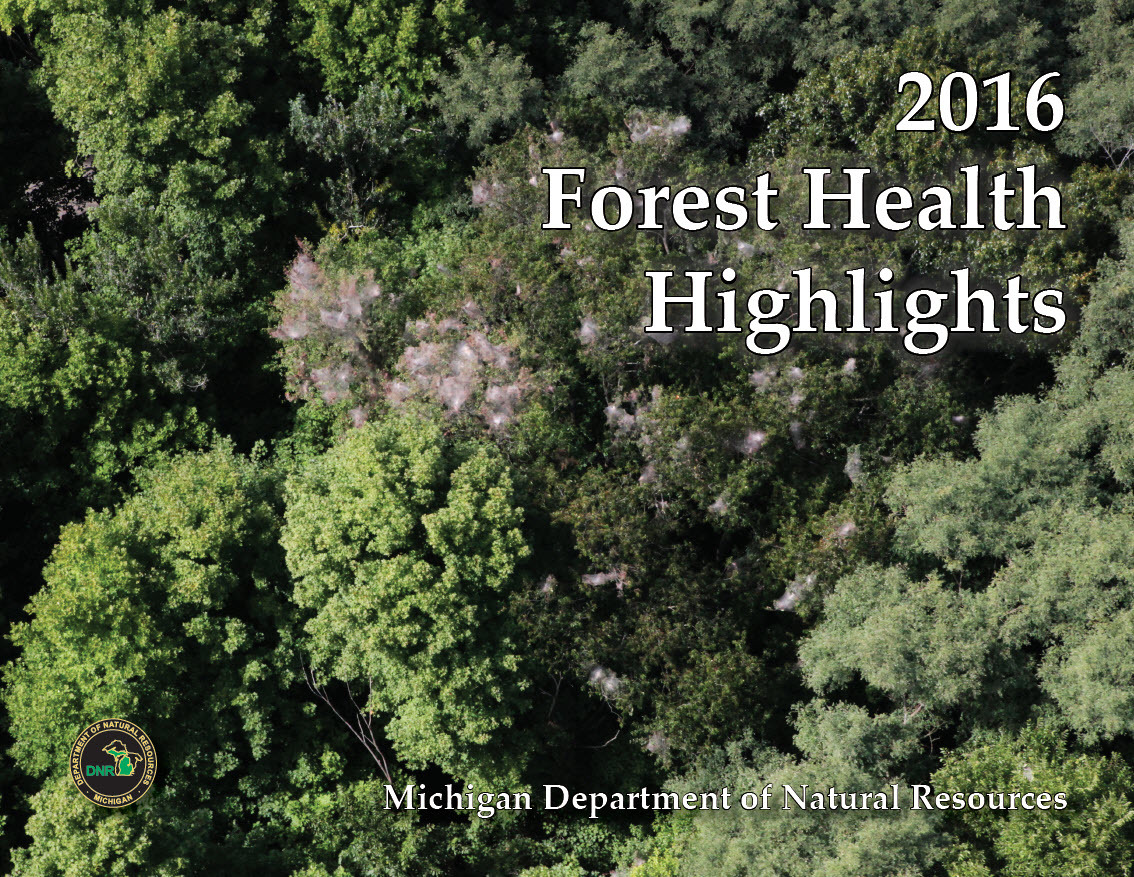|
March 21, 2017
Contact: Roger Mech, 810-229-4155
DNR releases update on health of Michigan’s forest land
 Michigan’s approximately 20 million acres of forest land play a key role in the state's recreation, forest products and other important industries, and the health of those forests is essential to sustaining this vital resource for many generations. Michigan’s approximately 20 million acres of forest land play a key role in the state's recreation, forest products and other important industries, and the health of those forests is essential to sustaining this vital resource for many generations.
The 2016 Forest Health Highlights report, recently released by the Michigan Department of Natural Resources, gives an overview of Michigan’s forests, the insects and diseases that have threatened them over the past year, and details about what is being done to improve the state’s urban and rural forests.
The report breaks down forest health threats by examining insects and diseases, forest decline and ongoing forest health research. Accompanying photos and maps illustrate the pests and show the effects they have had on Michigan’s forest system.
Among the highlights in the report are the DNR’s efforts to control spruce budworm, a native forest pest that periodically defoliates spruce and fir forests in the northeast. Spruce budworm infestations likely will continue to increase over the next 10 years, and efforts are under way to identify high-risk areas in state forests.
Hemlock woolly adelgid, an exotic invasive insect that kills hemlock trees, was found in the west-central Lower Peninsula in 2015, and state agencies are working to develop a response strategy and to inform the public. The Michigan Department of Agriculture and Rural Development also is leading the discussion around a proposed quarantine area in western lower Michigan that would restrict the movement of hemlock seedlings and trees.
Status of these infestations is discussed, along with cooperative efforts by the DNR, MDARD, Michigan State University and others to address threats to Michigan’s forests.
“The key to preventing and slowing the spread of exotic invasive organisms in Michigan’s forests is public awareness,” said Roger Mech, DNR forest health specialist. “The Forest Health Highlights report provides timely information about the condition of our forests and what’s being done to protect this important resource.”
To learn more about the health of the state forest system, check out the 2016 Forest Health Highlights report by visiting www.michigan.gov/foresthealth.
The Michigan Department of Natural Resources is committed to the conservation, protection, management, use and enjoyment of the state’s natural and cultural resources for current and future generations. For more information, go to www.michigan.gov/dnr.
|







